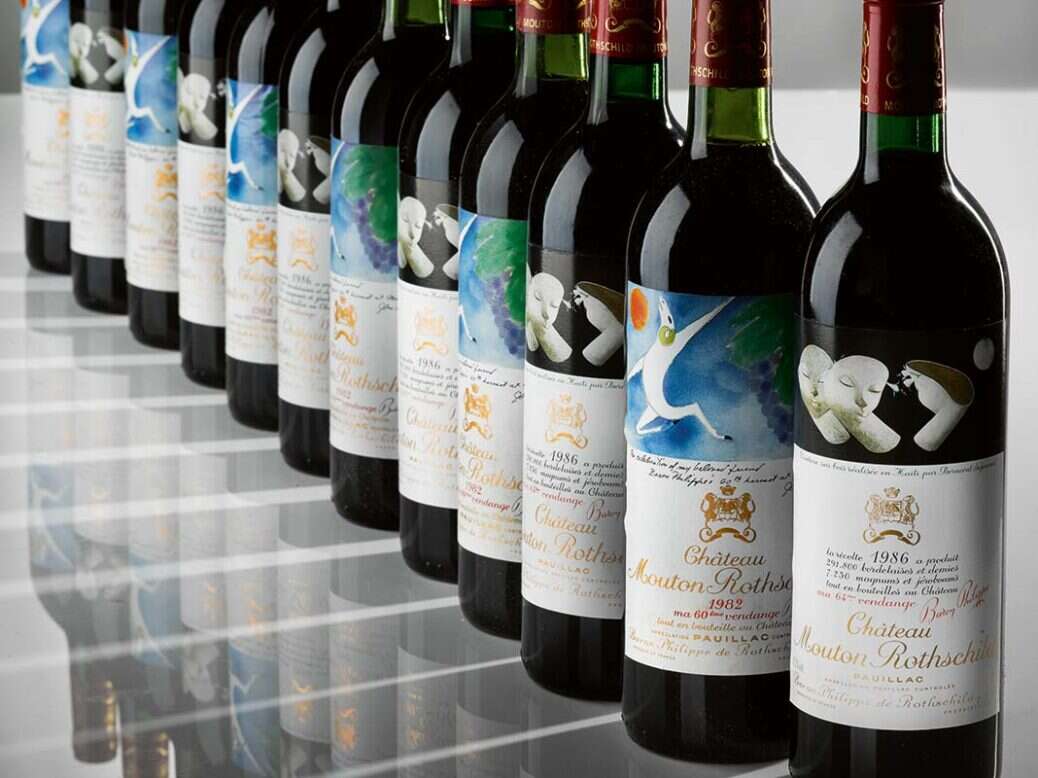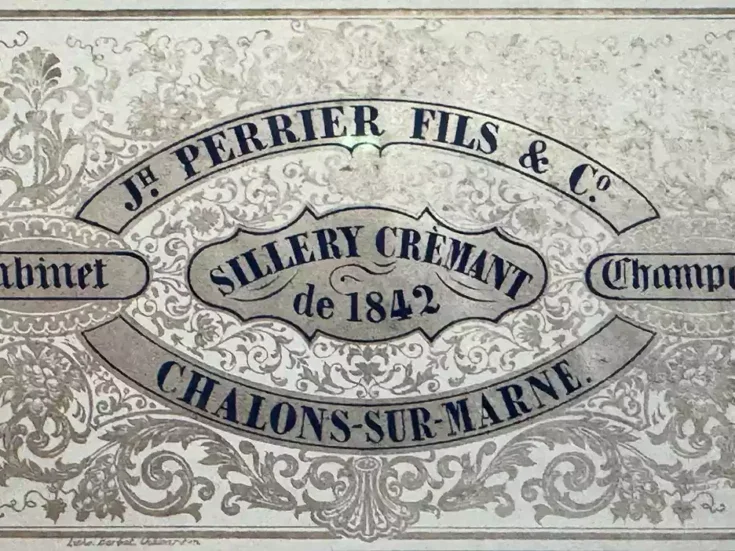
Andrew Jefford tastes 1986 Château Mouton-Rothschild along with a flock of other mature Mouton vintages in Riga.
Ideal tasting weather: a lightly mottled sky gleamed down on freshly fallen snow. The last unculled plants on the balcony wore white top hats. Cautious cars crawled along the salt-darkened road below, but the bare trees in the small park nearby dazzled us, as we looked out, with their fretwork of white branches and bronchioles. Inside the large, airy flat, 12 of us gathered to shepherd a flock of 11 Moutons home to oblivion over seven hours or so. A home-cooked lunch brought leisurely punctuation.
Yes, just four issues have passed, and I’m back enjoying Mouton once again. Goodness! It’s not editorial largesse or a lottery win, but fortunate happenstance. “Wine and Art: Six Decades of Mouton-Rothschild” formed part of the fall session of the Riga Wine & Champagne Festival: The World of Fine Wine’s long-term Bordeaux scholar Michael Schuster tutored guests on the wines, festival organizer Aigars Nords spoke about the label paintings, and Aigars’s wife Marite cooked beautiful food for us. I was a fortunate invitee.
The youngest pair were 2004 and 2005; the oldest, 1952 and 1962. Between came 1970, 1973, and 1975; then 1982, 1985, and 1986; and finally 1996. Michael and I took notes beforehand, but final verdicts came, as they should, in the drinking. Everyone had three votes, for both paintings and wines.
The wines had come from a variety of sources, but there were no flops, not even the unfancied 1952, with its worryingly low level (below shoulder). I will come to the main surprises of the tasting in concluding, but no one felt Mouton had let them down, and the wine’s warmth and comfort were often on display. These were Pauillacs of breath and breadth, of ample welcome.
Almost all the labels found admirers, even the smudgy brown pines of Cap d’Antibes painted by the UK’s Prince Charles (as he was then) for the 2004 Mouton-Rothschild label, honoring the 100th anniversary of the Entente Cordiale. (It was served at the Versailles Hall of Mirrors dinner in King Charles III’s honor on September 20, 2023). Most liked, though, was Giuseppe Penone’s haunting drawing for the 2005 vintage, showing handprint and vine leaves, with one leaf superimposed on the palm of the hand: half-art, half-paleontology, rendered in the green of life and the black of earth, death, cinders. Only two paintings went unlauded: Gu Gan’s calligraphic drawing for the 1996 vintage, and Warhol’s collage-like effort for 1975.
The folly of the perfect score
The 1975 vintage, too, was the only wine for which no one could find a vote. It wasn’t considered faulty, but its brackish, mentholated, wet-leather character—even a whiff of the tanner’s yard?—was just a little too characterful, though the wine was sturdy and enduring on the palate. My own favorite was the glorious 1982, an even finer and fresher bottle than the one I described in issue 79 and obtained by Michael from a friend with a cold Scottish cellar. It was sweet, complete, and serene, covering all points on the wine compass—from sublimated fruits, through cream and mushroom, to humus; it was the group’s runner-up. Other strong performers were 1996 (fresh, shapely, poised, and pristine, almost rosebud-like in its definition and delicacy, though at the same time very Mouton in its savory, Havana allusions) and the surprising 1973. This was the year Mouton finally won its first-growth promotion; it carries a 1959 Picasso Bacchanale already owned by the Rothchilds but reproduced in memoriam. (Picasso died on April 8, 1973.) The wine had everything: grace, charm, seduction, and allusive refinement. But not density; we gobbled it up joyfully, afraid that it might even fade in the glass. The busy and beautifully proportioned 2004 (better than reputation) and the languid, summery, and mellow 1970 were also much liked.
And so to the two biggest surprises. The most-liked wine overall was the 1962: still dark in color, ringing and pure in style, serenely classical and accessible. A “tender delight,” as Michael put it. Whereas the 1986—a legendary wine, given a perfect score by numerous critics—was little enjoyed among its peers on this day; it received just one vote. Dark, dense, not quite opaque, with close-knit but furrowed aromas of cedar and coal dust and a sinewy, severe, taut, acid-structured palate that insisted on admiration but seemed ungenerous for all that. Michael Schuster described how this “originally magnificent” wine “has become a thoroughgoing enigma.” It was still glorious in 2003, he said, but the tannins had come to dominate by 2013, and in Riga he found it “dry-edged, stolid, grippy, brief, and charmless,” with its “fruit in retreat […] flesh falling away and exposing an intransigent tannin”. A “positively grumpy old age” lay in store, he feared.
As with the 1975, this was not a bad bottle; the idea that it might be considered “perfect,” though, seemed strange. Perfection must mean loveliness, but this wine appeared unlovely among its peers, despite its assiduous box-ticking (color, aroma, structure, concentration). Greatness in wine is a matter of disposition, not accumulation [see also WFW 15, p.212]; and comparing wines like the ’62, the ’73, and the ’82—all so inviting, all so satisfying—with the ’86 reinforced this truth. Do we over-reward what seems admirable, forgetting that it must also be likable—and drinkable?
This Mouton ’86 also underscored the folly of the faultless score. Perhaps it was “perfect”—once. Our tasting suggested it was so no longer. “New issue with 12 100-point wines!” read a Wine Advocate promotional email sent to me on December 21, 2023. Can perfection truly be commonplace, regular, or routine, as this mail-out suggests? Who will run the audit? And when?






